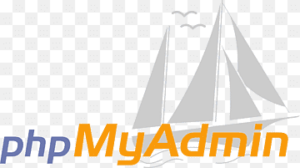I am using docker compose, I want to open few extensions and edit. So basically I want to open php.ini file. How can we exactly do that. However some solutions I read are saying to do changing in docker_compose.yaml, I am also sharing the file.
I am using php laravel framework, and running application on ubuntu server. Any help is highly appreciated.
Thanks in advance.
docker_compose.yaml look something like this.
version: '3.7'
services:
php:
container_name: eesotne-fpm
build: ./deployment/fpm
image: eesotne-fpm
entrypoint: ./deployment/fpm/entrypoint.sh
volumes:
- ./:/eesotne
depends_on:
- mysql
- redis
mysql:
container_name: eesotne-mysql
image: mysql:5.7
volumes:
- "mysql_data:/var/lib/mysql"
restart: always
environment:
- MYSQL_ROOT_PASSWORD=secret
- MYSQL_DATABASE=eestone
- MYSQL_USER=eestone
- MYSQL_PASSWORD=secret
admin:
container_name: eesotne-adminer
image: adminer
restart: always
depends_on:
- mysql
ports:
- 8081:8080
phpmyadmin:
container_name: eesotne-phpmyadmin
image: phpmyadmin/phpmyadmin
links:
- mysql
ports:
- 8080:80
environment:
MYSQL_USER: eesotne
MYSQL_PASSWORD: secret
MYSQL_ROOT_PASSWORD: secret
MYSQL_DATABASE: eesotne
PMA_HOST: mysql
PMA_PORT: 3306
nginx:
container_name: eesotne-nginx
image: nginx
ports:
- "80:80"
volumes:
- ./deployment/nginx/default.conf:/etc/nginx/conf.d/default.conf
- ./:/eesotne
- ./deployment/logs/nginx:/var/log/nginx
depends_on:
- php
redis:
container_name: eesotne-redis
image: redis
volumes:
- redis_data:/data
portainer:
container_name: eesotne-portainer
image: portainer/portainer
ports:
- "9000:9000"
command: -H unix:///var/run/docker.sock
volumes:
- /var/run/docker.sock:/var/run/docker.sock
- portainer_data:/data
echo:
container_name: eesotne-echo
build: ./deployment/echo
entrypoint: ./deployment/echo/entrypoint.sh
working_dir: "/usr/src/app"
depends_on:
- redis
volumes:
- "./:/usr/src/app"
volumes:
redis_data:
portainer_data:
mysql_data:

 Question posted in
Question posted in 

2
Answers
You need to create your custom image.
Not sure about how you are building your images but it seems you already have your docker files with your specifications.
If you are using an official image as base image to enable the image it is very easy in the construction of the docker image.
To configure the
php.inithe good practice is have a preconfiguredphp.iniand copy it to the image to replace the default.Hope this can help.
Another dirty method could be update your
php.iniwith a shell script using the sed command to replace with your values.You mentioned some solutions require you to edit your
docker-composefile, but I’m not entirely sure if that’s an issue for you based on your post.You could map a volume to a local directory and give yourself free rein to add any PHP configuration in the future. If your container is based on the official image, you can do something like this:
Which would map your local
php-confdirectory to the directory configured to scan for more.inifiles. You can also override this with thePHP_INI_SCAN_DIRenv variable:In there you can put whatever configuration you’d like to override in
.inifiles.